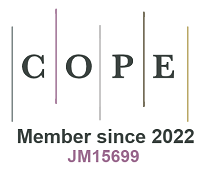Review | Open Access
Oxygen vacancy modulation in two-dimensional metal oxides for biomedical applications
Views: 3
Chem. Synth. 2025;5:[Accepted].
Author Information
Article Notes
Cite This Article
Abstract
Two-dimensional metal oxides (2D MOs), as a typical representative of 2D inorganic materials, exhibit unique physicochemical properties and have received much attention in the field of nanomedical research. However, the complex physiological environment in living organisms stimulates further research into the functionality of 2D MOs to improve their ability to assemble therapeutic, diagnostic, and regenerative devices in organisms. One promising strategy, oxygen vacancy (OV, plural: OVs) engineering, can modulate the band structure and the number of active sites of 2D MOs, giving them additional functions in biological applications. Recently, researchers have developed various types of 2D MOs containing OVs via different synthetic routes, which have been extensively studied in biomedicine. Amorphization is also an effective method to introduce OVs in 2D MOs, but currently they have not been used in biological applications. This review summarizes generation, preparation, and characterization techniques of OVs in 2D MOs, as well as the role and application of OVs-rich 2D MOs in biomedical fields. Moreover, the prospects and challenges for the development of OVs-rich 2D MOs, especially amorphous 2D MOs, are discussed to facilitate the further development of these materials for biomedical applications.
Keywords
Oxygen vacancy, two-dimensional metal oxides, biomedical application
Cite This Article
Ding L, Zhu Y, Zhang Q, Li Y, Hou J, Xiao Z. Oxygen vacancy modulation in two-dimensional metal oxides for biomedical applications. Chem. Synth. 2025;5:[Accept]. http://dx.doi.org/10.20517/cs.2024.203
Copyright
© The Author(s) 2025. Open Access This article is licensed under a Creative Commons Attribution 4.0 International License (https://creativecommons.org/licenses/by/4.0/), which permits unrestricted use, sharing, adaptation, distribution and reproduction in any medium or format, for any purpose, even commercially, as long as you give appropriate credit to the original author(s) and the source, provide a link to the Creative Commons license, and indicate if changes were made.












